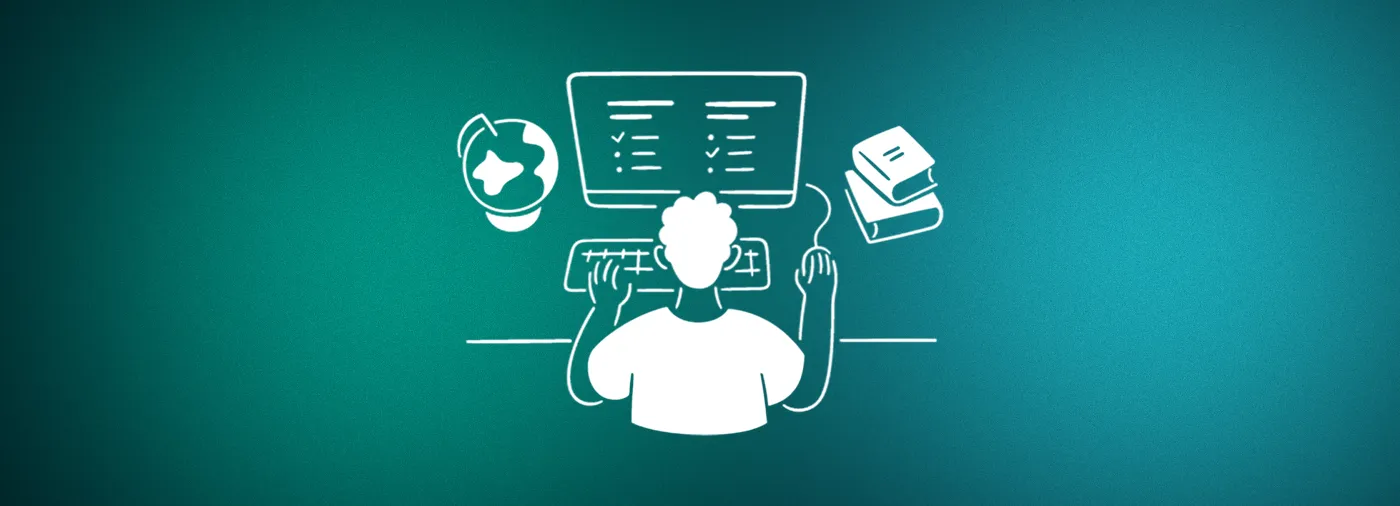Whether you're writing a blog post, landing page, or social media ad, effective copywriting can make all the difference in achieving your marketing goals.
We would like to provide you with a comprehensive overview of copywriting, from the basics of understanding cognitive biases and persuasion principles to the more advanced techniques of AIDA, PAS, and BAB copywriting frameworks.
Cognitive Biases & Persuasion
Our minds are constantly making shortcuts, or biases, in order to process information quickly and efficiently. While these biases can be helpful in some situations, they can also lead to irrational decisions. Marketers can use their understanding of cognitive biases to create persuasive copy that appeals to the human psyche.
Some of the most common cognitive biases include:
- Confirmation bias: We tend to seek out information that confirms our existing beliefs and ignore information that contradicts them.
- Anchoring bias: We tend to rely too heavily on the first piece of information we receive, even if it's not accurate.
- Social proof: We are more likely to believe something if we see that other people believe it.
- Fear of missing out (FOMO): We are more likely to act if we feel like we are missing out on something.
F-Shaped Pattern of Reading
Understanding how people read and consume information
In the digital age, people no longer read in the same way they do from a physical book. Instead, they tend to scan web pages in a pattern known as the F-shaped pattern. This pattern involves making a horizontal sweep across the top line of text, followed by a vertical scan down the left side of the page. This pattern is repeated until the reader has found what they are looking for.
Why does the F-shaped pattern occur?
There are a few reasons why the F-shaped pattern occurs. First, people are often looking for specific information when they are reading online. They scan the page quickly to find the information they need, and they are more likely to see information that is placed at the top and left of the page, as this is where we are accustomed to seeing important information.
How can you use the F-shaped pattern to your advantage?
Put your most important information at the top and left of the page: This is where people are most likely to see it, so make sure your headline, subheadings, and call to action are all prominently displayed in this area.
- Use short sentences and paragraphs: People are scanning the page quickly, so they won't read long sentences or paragraphs. Keep your writing concise and to the point.
- Use bullet points and lists to break up your text: Bullet points and lists make it easier for people to scan your text and find the information they're looking for.
- Use images and videos to add visual interest: Images and videos can help to break up your text and make it more visually appealing. They can also help to convey information in a more engaging way.
- Test your copy with real users: The best way to know if your copy is effective is to test it with real users. This will help you to identify any areas that need improvement.
The "Purple Cow" Theory
In his book "Purple Cow: Transform Your Business by Being Remarkable", Seth Godin argues that in order to stand out in today's crowded marketplace, you need to create something that is unique, remarkable, and worth talking about.
A "purple cow" is something that makes people stop and take notice.
If you want your copy to be truly persuasive, it needs to be more than just informative. It needs to be something that captures attention, sparks interest, and leaves a lasting impression.
The 4 C's of Copywriting
Compelling: Your copy should grab the reader's attention and make them want to read more.
• Use strong headlines and subheads that make a promise or highlight a benefit.
• Use vivid language and imagery to paint a picture in the reader's mind.
• Use storytelling to create a connection with the reader.
Clear: Your copy should be easy to understand and follow.
• Use simple language and avoid jargon.
• Use a logical structure that makes it easy for the reader to follow your argument.
• Proofread carefully to eliminate any errors.
Cohesive: Your copy should flow smoothly and make sense to the reader.
• Use transitions between paragraphs and sections to create a sense of flow.
• Use consistent formatting and style to make your copy easy to read.
• Be mindful of word count and avoid repetition.
Call to action: Your copy should tell the reader what you want them to do, such as click a button or visit a website.
• Make your call to action clear and concise.
• Use strong action words that motivate the reader to take action.
• Place your call to action in a prominent location where the reader is most likely to see it.
The 4 U's of Copywriting
Unique: Your offer should be unique and stand out from the competition.
Identify your unique selling proposition (USP) and highlight it in your copy; Offer something that is valuable and desirable to your target audience; Create a compelling reason for the reader to choose your product or service over the competition.
Urgent: Create a sense of urgency so that the reader feels compelled to take action now.
Use time-limited offers or discounts to create a sense of urgency; Use scarcity language, such as "limited time only" or "while supplies last"; Create a sense of FOMO (fear of missing out) by highlighting what the reader will miss out on if they don't take action now.
Useful: Your content should be valuable and helpful to the reader.
Offer solutions to the reader's problems; Provide information that is relevant and interesting to the reader; Make your copy actionable and easy to apply.
Ultra credible: Build trust with the reader by providing credible information and endorsements.
Use testimonials from satisfied customers; Cite statistics or research data to support your claims; Position your brand as an expert in your industry.
AIDA, PAS, & BAB Copywriting Frameworks
AIDA: Attention, Interest, Desire, Action
- Attention: Grab the reader's attention with a strong headline and subhead.
- Interest: Pique the reader's interest by highlighting the benefits of your product or service.
- Desire: Create a strong desire for the product or service by addressing the reader's pain points and offering solutions.
- Action: Tell the reader what you want them to do, such as click a button or visit a website.
PAS: Problem, Agitation, Solution
- Problem: Identify the problem that your product or service solves.
- Agitation: Agitate the reader's pain points and make them feel the need for a solution.
- Solution: Introduce your product or service as the solution to the reader's problem.
BAB: Benefit, Affordability, Belief
- Benefit: Highlight the key benefits of your product or service.
- Affordability: Demonstrate the value of your product or service by providing it at an affordable price.
- Belief: Establish credibility and trust by providing testimonials, case studies, or social proof.
Cialdini's 7 Principles of Persuasion
1) Reciprocity: We feel obligated to repay favors that have been done for us.
• Offer freebies or discounts to encourage sign-ups or purchases.
• Use social proof by showing that other people have already taken the desired action.
2) Scarcity: We desire things more when they are scarce or limited.
• Use time-limited offers or discounts to create a sense of urgency.
• Highlight the exclusivity of your product or service.
3) Authority: We are more likely to be persuaded by people who we perceive as being experts or authorities.
• Use testimonials from experts or industry leaders.
• Position yourself as an expert in your field.
4) Social proof: We are more likely to do something if we see that other people are doing it.
• Use testimonials from satisfied customers.
• Show social proof by displaying positive reviews or case studies.
5) Liking: We are more likely to be persuaded by people we like or feel similar to.
• Use humor or storytelling to connect with the reader on an emotional level.
• Position yourself as a friendly and approachable brand.
6) Commitment and consistency: Once we make a commitment, we are more likely to stick with it, even if it's not in our best interest.
• Use calls to action that encourage the reader to take a small step, such as signing up for a newsletter or downloading a free resource.
• Create a sense of momentum by encouraging the reader to take multiple actions.
7) Scarcity of options: We are more likely to choose a product or service if there are fewer options available.
• Use A/B testing to test different versions of your copy and landing page.
• Simplify the decision-making process by limiting the number of options available.
Conclusion
The art of copywriting is a powerful tool that can be used to achieve a variety of marketing goals. By understanding the principles of copywriting and using these techniques, you can create persuasive copy that captures attention, builds trust, and drives conversions.
Want to create persuasive copy that drives results?: Download Mastering the Art of Persuasion Ebook Here


